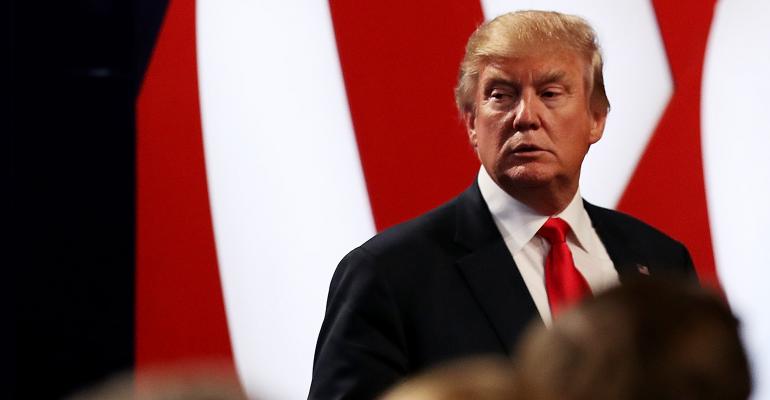President-elect Donald J. Trump is an unplanned-for surprise in a town that prides itself on studied prognostications, informed decision making and dogged preparation.
Being a creature of this town, I dutifully sat down to finish writing this piece the day before the election. It was full of carefully crafted predictions about the prospects for tax reform in 2017. I predicted that it would be a top priority for President-elect Clinton, but the House of Representatives was on track to be hopelessly gridlocked due to much publicized Republican infighting and that the new Democratic Senate would be a political hot mess because of the razor-thin margins. So tax reform, while ripe, would suffer from continued congressional dysfunction and partisan politics. And I predicted that it would probably fail in the end.
Then Trump happened.
The Reset Button
The first few days after the election Washingtonians were walking around in a daze. The trajectory of policy and politics post-election that we were so sure about was eviscerated. Trump’s win hit the reset button on everything.
Republicans in the House are busy mending fences, putting their best game faces on and falling in line behind Speaker Paul Ryan for another two years. Republicans in the Senate are celebrating because they’re still in control, despite very big odds against them, after election night. And now everyone in Congress—even the Democrats—is talking about tax reform. It’s on. Big time.
As for President-elect Trump, he announced his top three list for his first 100 days in office: (1) immigration (securing our borders), (2) health care (repealing big portions of the Affordable Care Act), and (3) growing jobs (driving economic growth via tax reform and putting people to work building and repairing our country’s infrastructure).
House and Senate Tax Plans
What should your clients be paying attention to with so much noise in Washington D.C? Until Trump takes office and has a working Treasury team, they should probably focus on just two things: the tax plans emerging from the House and the Senate.
The House’s tax reform plan details lower tax rates on income and investments that should spur economic growth—all good for philanthropy because it’s generally thought that more money in your pocket means you can be more generous. But the House’s blueprint is somewhat cagey on charitable giving incentives, like the charitable deduction. It acknowledges the deduction is important but doesn't expressly commit to keeping it as is. So the sector has work to do there to reinforce the value of the current charitable deduction.
Over on the Senate side, tax-writing committee Chairman Orrin Hatch (R-Utah) is working on the Senate’s version of tax reform, and it’s being referred to as a “corporate integration” model. While nothing formal has come from Chairman Hatch, details have emerged, and the charitable sector is already crying foul. That’s because the type of “corporate integration” model he’s looking at would impose tax on dividends and interest paid to tax-exempt shareholders, like foundation endowments, while eliminating it from everyone else. That said, Chairman Hatch has been among the biggest supporters of donors and the charitable deduction. So it seems pretty unlikely that he would let this happen. This one bears close watching.
As for the new administration, in the lead-up to the election, Trump was hot and cold on the charitable deduction. And he wasn’t particularly generous in his own giving. So like the House, the charitable sector has work to do at the Treasury Department as well.
Two More Areas of Concern
Aside from changes to the charitable deduction, your clients should be wary of two other topics that could gain traction during tax reform negotiations.
First, your clients’ donor-advised funds (DAFs) could come under fire. Critics have pointed to DAFs as charitable bank accounts to which money goes in but doesn’t necessarily have to quickly come out. Technically, that’s true. Owners of DAFs aren’t put on a mandatory spending plan. Practically though, the numbers tell a different story, and the average DAF payout of 20 percent is far above other charitable payout rates. Some in Congress aren’t convinced, which could mean a run at trying to legislate a mandatory payout for DAFs.
The second concern should be for your foundation clients. While the Clinton and Trump foundations were bashed for their questionable governance practices, the Internal Revenue Service will probably take the lead on sorting those all out. But, members of Congress are probably wondering that if two prominent foundations, with all the attendant scrutiny, could get away with those practices for that long, what about other foundations that typically fly under the radar? Could it be time for another round of investigations? For now, it’s too soon to tell how much damage was done to the reputation of the charitable sector. But this is definitely something to watch closely.

